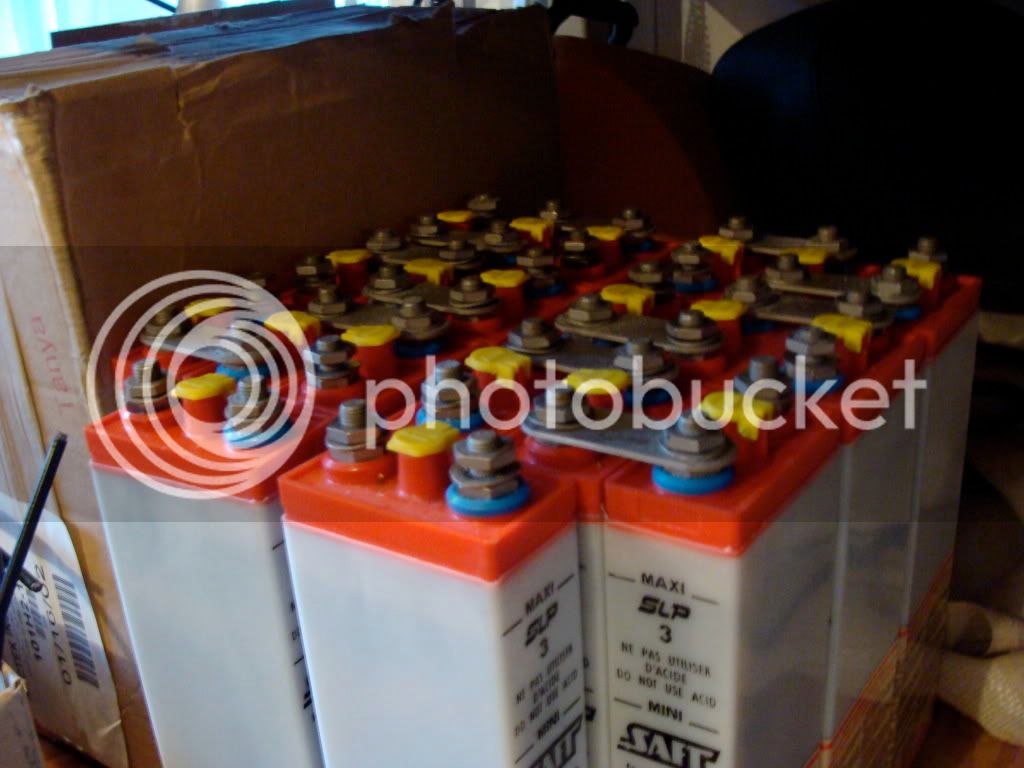northernmike
10 kW
Edit: added pic.

Hi folks. My boss has a small stock of SAFT NiCads he's going to sell me, I need to come up with a reasonable price to offer him ... they're 27Ah, refillable NiCads .... that have apparently been sitting for 10+ years. He's not sure if he has 12 or up to 20 of them - he's going to let me know in the next few days.
Though the model code name seems obsolete, they look very comparable with SAFT's current offerings in NiCad form. I believe these are SLP 3 type, comparable to something like an STM 300. It looks like electrolytes are still available - I wonder if this is the case for a small end-user like myself, given what little I've read, mostly here....
It would appear that the Peugeot Scootelec ran similar SAFT cells with some success, albeit with 100Ah capacity & 18V potential.
What do you think? Will these be serviceable? What would be a fair price to offer / cell? I sincerely hope there's good news to be heard!
FYI I am powering a moped with an original eTek and an Alltrax 4834 ... obviously higher volts would be better, but if I can load these appropriately with taller gears, I'm game.
Please advise if you're able!
Thanks and best regards,
- Mike

Hi folks. My boss has a small stock of SAFT NiCads he's going to sell me, I need to come up with a reasonable price to offer him ... they're 27Ah, refillable NiCads .... that have apparently been sitting for 10+ years. He's not sure if he has 12 or up to 20 of them - he's going to let me know in the next few days.
Though the model code name seems obsolete, they look very comparable with SAFT's current offerings in NiCad form. I believe these are SLP 3 type, comparable to something like an STM 300. It looks like electrolytes are still available - I wonder if this is the case for a small end-user like myself, given what little I've read, mostly here....
It would appear that the Peugeot Scootelec ran similar SAFT cells with some success, albeit with 100Ah capacity & 18V potential.
What do you think? Will these be serviceable? What would be a fair price to offer / cell? I sincerely hope there's good news to be heard!
FYI I am powering a moped with an original eTek and an Alltrax 4834 ... obviously higher volts would be better, but if I can load these appropriately with taller gears, I'm game.
Please advise if you're able!
Thanks and best regards,
- Mike


